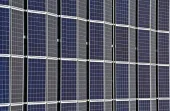
Further power project delays hit Myanmar's blossoming sector
Project pipeline shrunk to just 6.4GW.
A growing economy and limited electrification rates are some factors that will boost power demand across Myanmar and make its power sector one of Asia's fastest growing in terms of consumption.
However, if barriers to projects remain, Myanmar's power sector potential will not be fully achieved. "We expect electricity consumption to grow by an annual average of 8.5% between 2016 and 2025 - creating a myriad of opportunities for companies to invest in new power generating capacity," said Georgina Hayden, BMI Research's head of Power and Renewables.
She said investor interest in the market has increased even amid current political issues, and more power projects are in the pipeline as a result.
Hayden cited data from their key projects database indicating less than 18.5GW of power capacity in the pipeline comprises coal, gas , hydro and solar power projects. She notes, however, that analysing their database reveals a number of barriers to project realisation.
"If projects that are currently suspended or cancelled are not accounted for, the project pipeline shrinks to 6.4GW," said Hayden. "This aligns with our view that the potential in Myanmar's power sector will not be fully realised, based on regulatory hurdles, limited financing availability, local opposition to projects and grid infrastructure inefficiencies."
Projects that have had issues include the Myitsone Dam Project in northern Myanmar that was unexpectedly deferred in 2011 by then-President Thein Sein.
Lauren Hooley, research assistant with the Global Food and Water Crises Research Programme Future Directions International says this is one of the China-led projects the Myanmar government should address to ensure a smooth bilateral relationship.
"Should the new government continue to stall the hydropower programme, it is likely to damage the relationship with China and set the tone for its relations with the new government," said Hooley.



















 Advertise
Advertise







